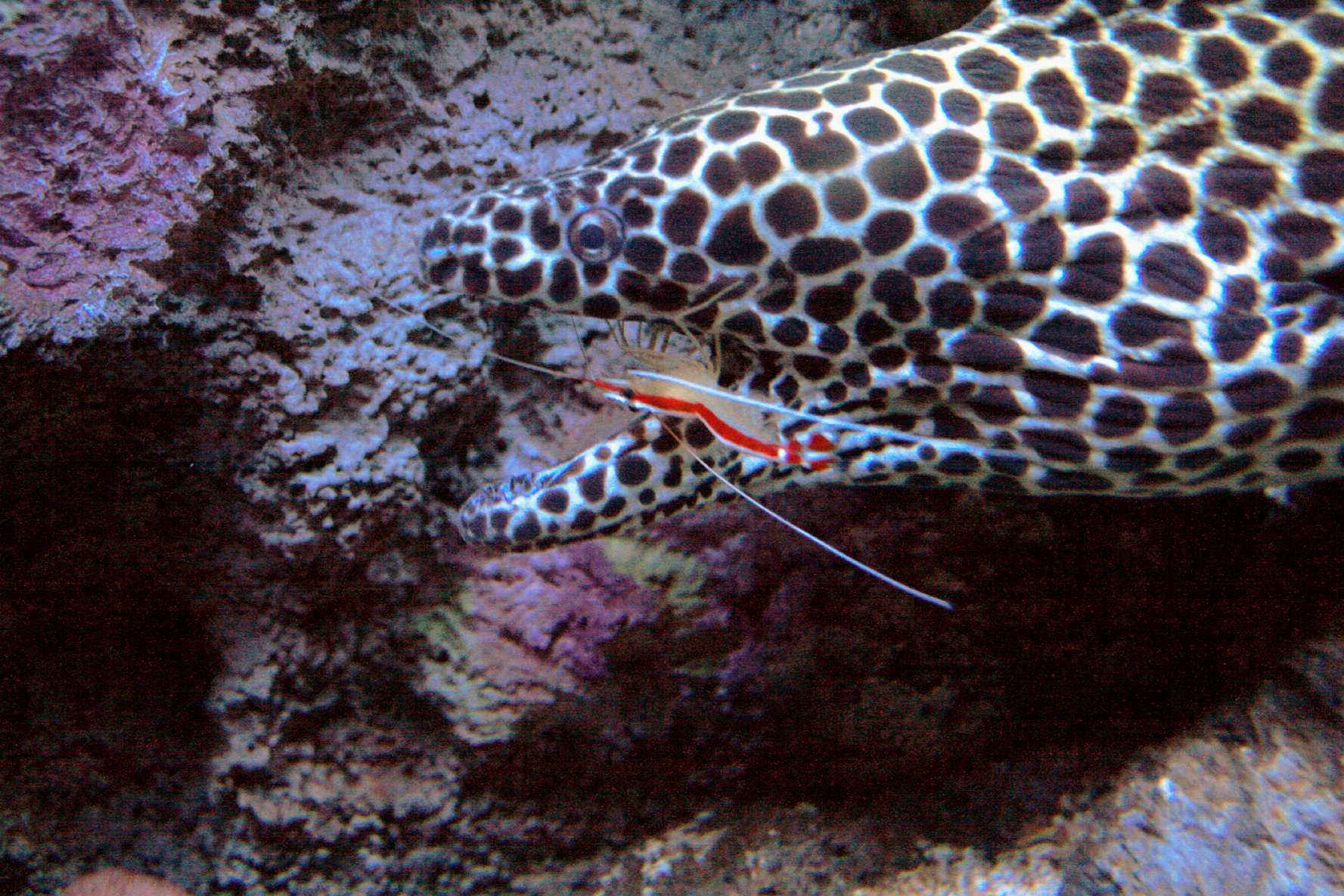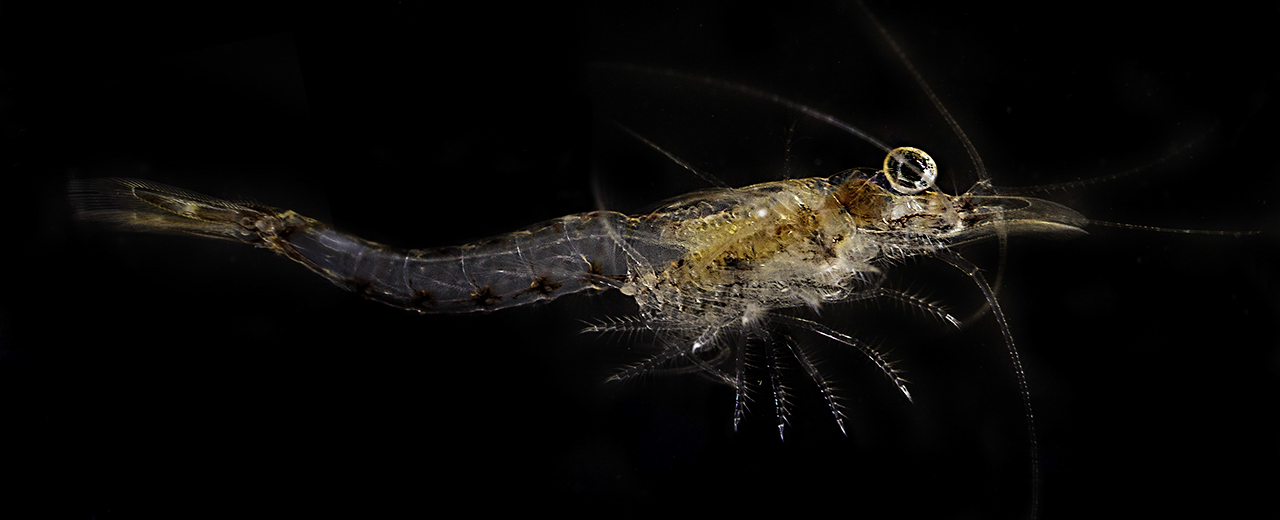|
Bartholomea Annulata
''Bartholomea annulata'' is a species of sea anemone in the family Aiptasiidae, commonly known as the ringed anemone or corkscrew anemone. It is one of the most common anemones found on reefs in the Caribbean Sea. Description The ringed anemone can reach a diameter of when fully extended. The column is short and wide and the oral disc with its central mouth can be across. There are about two hundred long, translucent tentacles ringed with whorls and spirals formed by groups of cnidocytes. The general colour is grey or brown with the cnidocyte area cream coloured. The anemone contains symbiotic zooxanthellae, single-celled algae that live within its tissues. During the day these use energy from the sun to manufacture carbohydrates by photosynthesis. The sea anemone benefits from this and the algae have a safe lodging free from the likelihood of predation. Distribution and habitat The ringed anemone is a common species in the Caribbean and Gulf of Mexico. Its range extends from ... [...More Info...] [...Related Items...] OR: [Wikipedia] [Google] [Baidu] |
Charles Alexandre Lesueur
Charles Alexandre Lesueur (1 January 1778 in Le Havre – 12 December 1846 in Le Havre) was a French Natural history, naturalist, artist, and explorer. He was a prolific natural-history collector, gathering many type specimens in Australia, Southeast Asia, and North America, and was also responsible for describing numerous species, including the spiny softshell turtle (''Apalone spinifera''), smooth softshell turtle (''Apalone mutica, A. mutica''), and common map turtle (''Graptemys geographica''). Both Mount Lesueur and Lesueur National Park in Western Australia are named in his honor. Early life Charles Alexandre Lesueur was born on January 1, 1778, to Jean-Baptiste Denis Lesueur and Charlotte Thieullent. Charlotte died when Charles was sixteen years old, and Charles' maternal grandmother took care of him and his siblings. Charles attended the Collège du Havre and possibly the Ecole publique des mathématiques et d'hydrographie. He was in military service in a cadet bat ... [...More Info...] [...Related Items...] OR: [Wikipedia] [Google] [Baidu] |
Metamorphosis
Metamorphosis is a biological process by which an animal physically develops including birth or hatching, involving a conspicuous and relatively abrupt change in the animal's body structure through cell growth and differentiation. Some insects, fish, amphibians, mollusks, crustaceans, cnidarians, echinoderms, and tunicates undergo metamorphosis, which is often accompanied by a change of nutrition source or behavior. Animals can be divided into species that undergo complete metamorphosis (" holometaboly"), incomplete metamorphosis ("hemimetaboly"), or no metamorphosis (" ametaboly"). Scientific usage of the term is technically precise, and it is not applied to general aspects of cell growth, including rapid growth spurts. Generally organisms with a larva stage undergo metamorphosis, and during metamorphosis the organism loses larval characteristics. References to "metamorphosis" in mammals are imprecise and only colloquial, but historically idealist ideas of transformation ... [...More Info...] [...Related Items...] OR: [Wikipedia] [Google] [Baidu] |
Animals Described In 1817
Animals are multicellular, eukaryotic organisms in the biological kingdom Animalia. With few exceptions, animals consume organic material, breathe oxygen, are able to move, can reproduce sexually, and go through an ontogenetic stage in which their body consists of a hollow sphere of cells, the blastula, during embryonic development. Over 1.5 million living animal species have been described—of which around 1 million are insects—but it has been estimated there are over 7 million animal species in total. Animals range in length from to . They have complex interactions with each other and their environments, forming intricate food webs. The scientific study of animals is known as zoology. Most living animal species are in Bilateria, a clade whose members have a bilaterally symmetric body plan. The Bilateria include the protostomes, containing animals such as nematodes, arthropods, flatworms, annelids and molluscs, and the deuterostomes, containing the echinoderms and ... [...More Info...] [...Related Items...] OR: [Wikipedia] [Google] [Baidu] |
Parasitism
Parasitism is a Symbiosis, close relationship between species, where one organism, the parasite, lives on or inside another organism, the Host (biology), host, causing it some harm, and is Adaptation, adapted structurally to this way of life. The entomologist E. O. Wilson has characterised parasites as "predators that eat prey in units of less than one". Parasites include single-celled protozoans such as the agents of malaria, sleeping sickness, and amoebic dysentery; animals such as hookworms, lice, mosquitoes, and vampire bats; fungi such as Armillaria mellea, honey fungus and the agents of ringworm; and plants such as mistletoe, dodder, and the Orobanchaceae, broomrapes. There are six major parasitic Behavioral ecology#Evolutionarily stable strategy, strategies of exploitation of animal hosts, namely parasitic castration, directly transmitted parasitism (by contact), wikt:trophic, trophicallytransmitted parasitism (by being eaten), Disease vector, vector-transmitted paras ... [...More Info...] [...Related Items...] OR: [Wikipedia] [Google] [Baidu] |
Antenna (biology)
Antennae ( antenna), sometimes referred to as "feelers", are paired appendages used for sensing in arthropods. Antennae are connected to the first one or two segments of the arthropod head. They vary widely in form but are always made of one or more jointed segments. While they are typically sensory organs, the exact nature of what they sense and how they sense it is not the same in all groups. Functions may variously include sensing touch, air motion, heat, vibration (sound), and especially smell or taste. Antennae are sometimes modified for other purposes, such as mating, brooding, swimming, and even anchoring the arthropod to a substrate. Larval arthropods have antennae that differ from those of the adult. Many crustaceans, for example, have free-swimming larvae that use their antennae for swimming. Antennae can also locate other group members if the insect lives in a group, like the ant. The common ancestor of all arthropods likely had one pair of uniramous (unbranched ... [...More Info...] [...Related Items...] OR: [Wikipedia] [Google] [Baidu] |
Periclimenes Yucatanicus
The spotted cleaner shrimp (''Periclimenes yucatanicus''), is a kind of cleaner shrimp common to the Caribbean Sea. These shrimp live among the tentacles of several species of sea anemones. They sway their body and wave their antennae in order to attract fish from which they eat dead tissue, algae and parasites. Description The spotted cleaner shrimp grows to a length of about . It has a transparent body patterned with brown and white saddle shaped markings. The chelae and legs are boldly striped in red, purple and white. There are two pairs of long white antennae banded in black. Distribution The spotted cleaner shrimp is found at depths down to about in the Caribbean Sea, southern Florida, the Bahamas and as far south as Colombia. Life cycle Breeding takes place in the summer and females have been seen brooding eggs under their abdomens in the months of July and August. After hatching, the larvae pass through several planktonic larval stages before settling on the seabed and ... [...More Info...] [...Related Items...] OR: [Wikipedia] [Google] [Baidu] |
Ancylomenes Pedersoni
''Ancylomenes pedersoni'', sometimes known as Pederson's shrimp and Pederson's cleaner shrimp, is a species of cleaner shrimp. It is part of the genus ''Ancylomenes'' and was described in 1958 by Fenner A. Chace Jr. as ''Periclimenes pedersoni''. ''Ancylomenes pedersoni'' is found in the Caribbean Sea, often associated with a sea anemone, at depths of . They are often found on the reefs off Bermuda. Description Pederson's shrimp is a small transparent shrimp with bluish and violet markings on the body and long white antennae and within its range is unlikely to be confused with other species. Ecology Pederson's shrimp lives in association with a sea anemone, either ''Bartholomea annulata'' or ''Condylactis gigantea'', living among the tentacles with impunity. Before it can do this it needs to acclimatise itself to the anemone by progressively pressing its body and appendages against the tentacles for increasing periods of time. After this it is able to move between the tentacles ... [...More Info...] [...Related Items...] OR: [Wikipedia] [Google] [Baidu] |
Cleaner Shrimp
Cleaner shrimp is a common name for a number of swimming decapod crustaceans, that clean other organisms of parasites. They belong to any of three families, Hippolytidae (including the Pacific cleaner shrimp, ''Lysmata amboinensis''), Palaemonidae (including the spotted '' Periclimenes magnificus''), and Stenopodidae (including the banded coral shrimp, ''Stenopus hispidus'') . The last of these families is more closely related to lobsters and crabs than it is to the remaining families. The term "cleaner shrimp" is sometimes used more specifically for the family Hippolytidae and the genus ''Lysmata''. Cleaner shrimp are so called because they exhibit a cleaning symbiosis with client fish where the shrimp clean parasites from the fish. The fish benefit by having parasites removed from them, and the shrimp gain the nutritional value of the parasites. The shrimp also eat the mucus and parasites around the wounds of injured fish, which reduces infections and helps heali ... [...More Info...] [...Related Items...] OR: [Wikipedia] [Google] [Baidu] |
Heteromysis Actiniae
''Heteromysis actiniae'', commonly known as the anemone mysid, is a species of opossum shrimp from the family Mysidae found in association with the sea anemone '' Bartholomea annulata''. It is found in the Caribbean Sea and the Gulf of Mexico. Description Male anemone mysids grow to a length of about and females to a length of . A broad, bright red stripe extends from the tip of the antennae, past the eyes, along the top of the carapace A carapace is a Dorsum (biology), dorsal (upper) section of the exoskeleton or shell in a number of animal groups, including arthropods, such as crustaceans and arachnids, as well as vertebrates, such as turtles and tortoises. In turtles and tor ... and back, to the tail, dividing where it reaches the paired uropods. Distribution The anemone mysid is found living in association with the sea anemone '' Bartholomea annulata'' in the Bahamas, the Lesser Antilles, the Caribbean Sea, the Gulf of Mexico and the eastern coasts of Mexico and Pa ... [...More Info...] [...Related Items...] OR: [Wikipedia] [Google] [Baidu] |
Opossum Shrimp
Mysida is an order of small, shrimp-like crustaceans in the malacostracan superorder Peracarida. Their common name opossum shrimps stems from the presence of a brood pouch or "marsupium" in females. The fact that the larvae are reared in this pouch and are not free-swimming characterises the order. The mysid's head bears a pair of stalked eyes and two pairs of antennae. The thorax consists of eight segments each bearing branching limbs, the whole concealed beneath a protective carapace and the abdomen has six segments and usually further small limbs. Mysids are found throughout the world in both shallow and deep marine waters where they can be benthic or pelagic, but they are also important in some fresh water and brackish ecosystems. Many benthic species make daily vertical migrations into higher parts of the water column. Mysids are filter feeders, omnivores that feed on algae, detritus and zooplankton. Some mysids are cultured in laboratories for experimental purposes and a ... [...More Info...] [...Related Items...] OR: [Wikipedia] [Google] [Baidu] |
Sea Spider
Sea spiders are marine arthropods of the order Pantopoda ( ‘all feet’), belonging to the class Pycnogonida, hence they are also called pycnogonids (; named after ''Pycnogonum'', the type genus; with the suffix '). They are cosmopolitan, found in oceans around the world. The over 1,300 known species have legs ranging from to over . Most are toward the smaller end of this range in relatively shallow depths; however, they can grow to be quite large in Antarctic and deep waters. Although "sea spiders" are not true spiders, or even arachnids, their traditional classification as chelicerates places them closer to true spiders than to other well-known arthropod groups, such as insects or crustaceans. This is in dispute, however, as genetic evidence suggests they may be the sister group to all other living arthropods. Description Sea spiders have long legs in contrast to a small body size. The number of walking legs is usually eight (four pairs), but the family Pycnogonidae hav ... [...More Info...] [...Related Items...] OR: [Wikipedia] [Google] [Baidu] |





